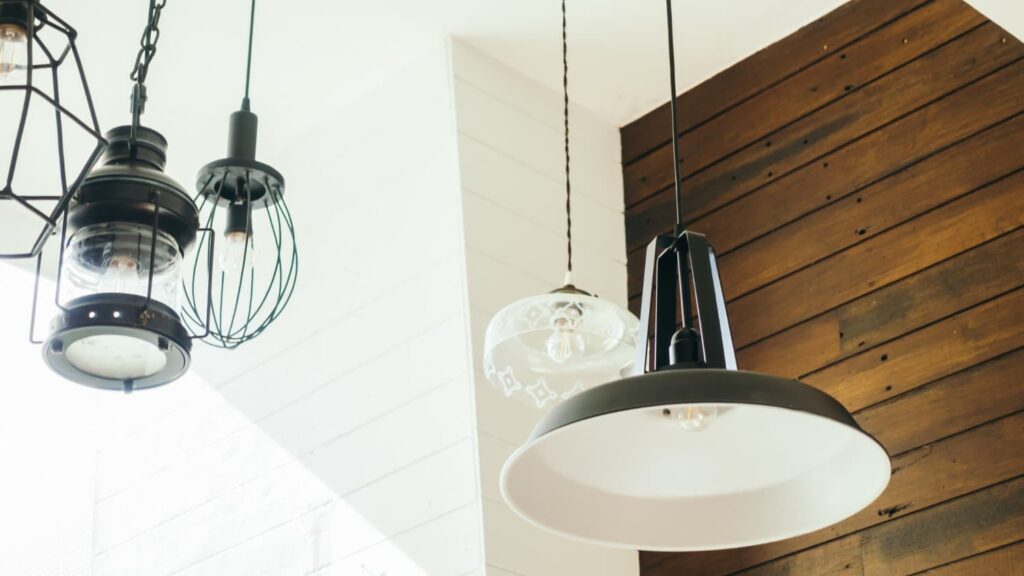Gas Leak: Why It Happens and What to Do
Gas leaks are a serious safety hazard that can lead to devastating consequences if not addressed promptly. From explosions and fires to health complications…

When it comes to lighting our homes, ceiling lights play a crucial role. They not only illuminate our spaces but also add style and personality. Understanding the types of ceiling lights available can help you make the best choice for every room in your home. Each type serves different purposes and suits different styles, from chandeliers to recessed lights.
Before diving into the different types of ceiling lights, it’s essential to understand some key aspects of lighting. Here are a few important terms and concepts:
Now that you have a grasp of the basics, let’s explore the various types of ceiling lights available. Each type has its unique style and function, making it suitable for different rooms and purposes.
Chandeliers are decorative ceiling lights often featuring multiple arms or branches, holding bulbs or candles. They are commonly used in dining rooms, foyers, or living spaces, adding elegance and style. Chandeliers come in various designs, from classic crystal styles to modern geometric shapes. They can be a stunning centerpiece, drawing the eye and elevating the room’s decor.
Flush mount lights are installed directly against the ceiling, leaving no gap. Typically round or square, they feature simple designs that work well in many settings. These lights are ideal for low ceilings and small rooms, such as hallways, bedrooms, and kitchens. Their unobtrusive design allows for ample light without overwhelming the space.
Similar to flush mount lights, semi-flush mount fixtures hang slightly below the ceiling, often with a decorative stem. They are suitable for rooms with moderate ceiling heights and are commonly found in dining rooms and entryways. These lights provide a balance between style and functionality, offering ambient light while enhancing room aesthetics.
Recessed lights are installed into the ceiling, sitting flush with the surface. This creates a clean, minimalist look, making them perfect for modern interiors. Recessed lighting is great for ambient lighting in living rooms, kitchens, or hallways. They can be used to highlight artwork or architectural features, providing versatility in lighting design.
Pendant lights hang from the ceiling by a cord, chain, or rod and come in various styles and sizes. They are frequently used over kitchen islands, dining tables, or in entryways to provide focused lighting. With endless design options, pendant lights can enhance the decor of any room while offering practical illumination.
Track lighting consists of multiple light fixtures attached to a track, allowing for adjustable positioning. This type of lighting is versatile and often used in galleries, retail spaces, or kitchens to highlight artwork or specific areas. Track lighting can be customized to suit your needs, making it an excellent choice for dynamic spaces.
Cove lighting is an indirect lighting method installed in a ledge or recess, creating a soft glow around the room’s perimeter. This type of lighting is often used for ambiance in living rooms or bedrooms and can enhance architectural features. Cove lighting adds depth and warmth to a space, making it feel inviting.
Vintage or retro lighting features exposed bulbs and often showcases industrial designs. This style is popular in cafes, restaurants, and homes that seek a rustic or nostalgic aesthetic. These fixtures can add charm and personality, making them ideal for creating a unique atmosphere.
Smart ceiling lights can be controlled remotely via smartphones or smart home devices. They offer features like dimming and color changes, making them ideal for modern homes. These lights provide convenience and customization, allowing you to adjust the ambiance according to your needs.
Skylights are openings in the roof that allow natural light to enter, often covered with glass or plastic. They are used in homes or commercial buildings to enhance natural light and create a sense of spaciousness. Skylights can reduce the need for artificial lighting during the day, making them an energy-efficient choice.
Selecting the right ceiling lights involves considering several factors to ensure you make the best choice for your space.
If you need light installation services in Surrey, Vancouver, Burnaby, or any area of British Columbia, consider reaching out to TaskPro. We can tackle any home improvement services, including renovations and remodeling for your home. Our team of professionals ensures your lighting is installed safely and efficiently. Contact us now for a free quote!
Semi-flush lights are excellent for providing a bright and ambient glow. If your chosen semi-flush light is compatible with sloped ceilings, it will come with hardware that allows the fixture to hang straight down. This feature is beneficial, as sloped ceilings are usually higher than level ceilings, making semi-flush fixtures ideal for creating the most ambient light.
LED lights are considered the most energy-efficient option, using up to 90% less energy and lasting up to 25 times longer than traditional incandescent bulbs. Initially known for indicators and traffic lights, LEDs now dominate general illumination applications with their efficiency and versatility.
Ceiling lights are fixed and illuminate the entire room, which can lead to higher electricity consumption. In contrast, floor lamps provide focused lighting to specific areas, which can help reduce overall electricity usage. When selecting lighting, consider both your choices’ functionality and energy impact.
Share this Guide
Gas leaks are a serious safety hazard that can lead to devastating consequences if not addressed promptly. From explosions and fires to health complications…
Septic tanks are a vital component of wastewater management systems, particularly in areas where municipal sewer systems are unavailable. These underground structures treat and…
Choosing the right toilet for your home is more than a simple decision; it’s an investment in comfort, efficiency, and functionality. The type of…